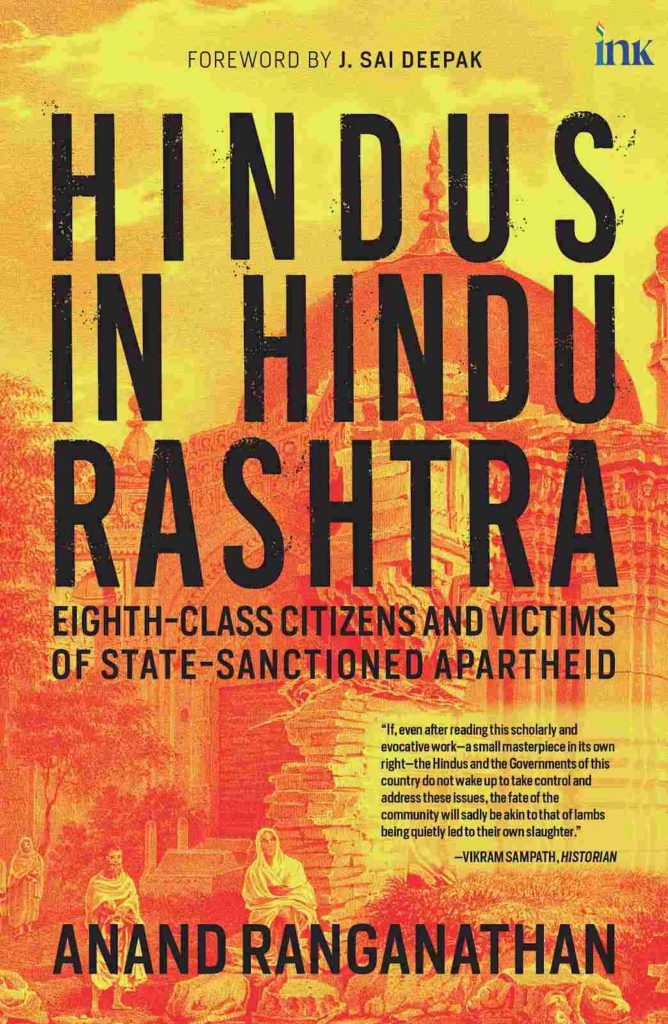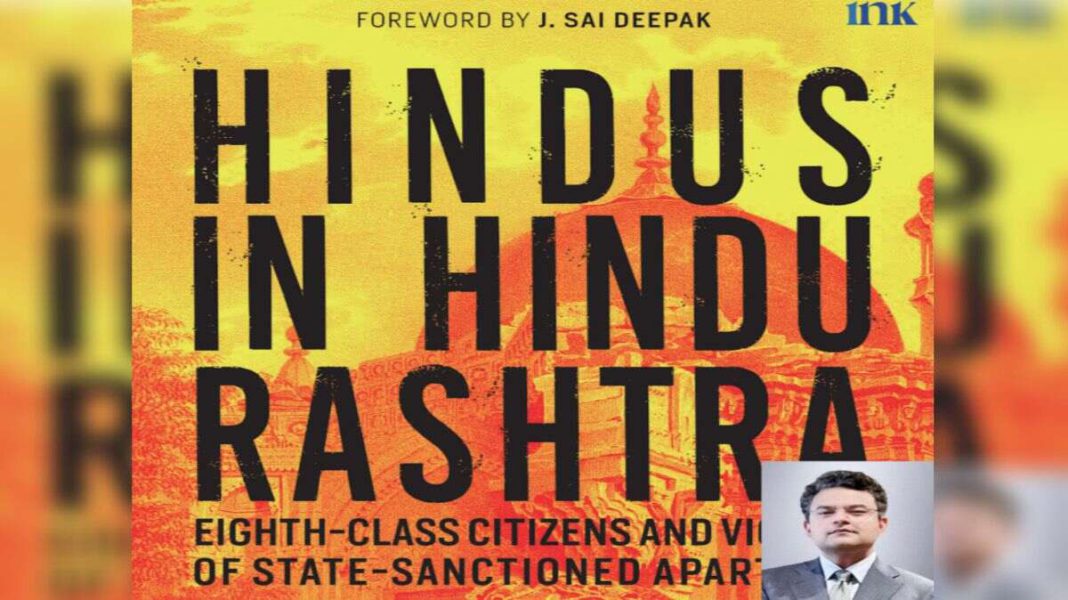Author: Dr. Anand Ranganathan
Publisher: One Blue Ink
INDIA: In “Hindu in Hindu Rashtra- Eighth Class Citizens and Victims of State Sanctioned Apartheid”, Dr. Anand Ranganathan, a molecular biologist in JNU New Delhi, embarks on a courageous journey through the intricate web of identity, justice, and governance in India. This remarkable book, which has soared to the top of the bestseller charts on Amazon, is a thought-provoking masterpiece that tackles several pressing issues that have defined India’s socio-political landscape for decades.

One of the strengths of “Hindu in Hindu Rashtra” lies in its accessibility. Ranganathan has a remarkable talent for breaking down complex ideas into digestible portions without sacrificing depth. Readers of all backgrounds and beliefs can engage with his narrative, making it a must-read for anyone interested in understanding the intricacies of contemporary India.
One of the most striking aspects of this book is Ranganathan’s candid examination of the state’s control over Hindu temples. Through meticulous research and insightful analysis, he sheds light on a subject often shrouded in obscurity.
His exploration of the historical context, legal framework, and financial implications of this control forces readers to grapple with questions of autonomy, fairness, and transparency in matters of faith. The fact that the Government of just 10 states control more than 1,11,000 Hindu temples can make readers dumbstruck.
Ranganathan’s treatment of the plight of Kashmiri Hindus is equally compelling. He confronts the injustice suffered by this community head-on, offering a sobering account of their forced exodus from the Kashmir Valley. His passionate and empathetic narrative underscores the urgent need for recognition, restitution, and rehabilitation of this marginalized group.
He juxtaposes Kashmiri Hindus with Rohingya Muslims and stated that ‘one can settle 5,700 Rohingya Muslims in Jammu and Kashmir, not 7 lakh Kashmiri Hindus’, capturing the treatment of original inhabitants of India.
The book also delves into the Waqf Act of 1995, providing a critical analysis of its implications on the management of religious properties in India. Ranganathan examines the intersection of religion, politics, and governance, offering readers a comprehensive view of the challenges and controversies surrounding the Waqf Board’s role.
The truth that the Waqf is the third largest landowner in India after Defence and the Railway can make you flabbergasted. Even the Supreme Court of India declared that a civil court of India has no jurisdiction in the matter of a suit pertaining to a Waqf property! What a nerve-wracking fact!
Ranganathan’s exploration of judiciary partiality is a wake-up call to the ideals of justice and impartiality. He navigates the complex terrain of judicial decisions, highlighting instances where the pursuit of justice may have been compromised (Shah Bano case).
His balanced approach encourages readers to reflect on the delicate balance between upholding the law and ensuring fairness in a diverse society. The title of the sixth chapter, “Judiciary that Almost Exclusively Tries to Reform Hinduism”, is simply worth serious reading.
The Places of Worship Act of 1991 is yet another topic dissected in this thought-provoking book. Ranganathan’s analysis of this legislation, which froze the status of religious places as they were in 1947, raises critical questions about the preservation of cultural heritage, religious freedom, and the role of the state in matters of faith.
“Should a judge be the product of the society, or should a society be the product of the judge?” captures the dichotomy of the act when related to Hindu temples.
“Hindu in Hindu Rashtra” is more than just a book; it is a call to action. Anand Ranganathan’s meticulous research, persuasive arguments, and captivating storytelling have created a narrative that demands attention, introspection, and dialogue.
This book challenges readers to confront uncomfortable truths, question prevailing norms, and engage in informed discussions about the intricate tapestry of religion, governance, and justice in India in relation to the Hindus of India.
In conclusion, “Hindu in Hindu Rashtra” is an exceptional work that has captured the zeitgeist of contemporary India. Ranganathan’s unflinching commitment to truth and justice, combined with his remarkable storytelling, make this book a must-read for anyone seeking a deeper understanding of the complexities that define the nation’s identity and its path towards a more just and inclusive future.
His 125-odd pages will compel the readers to think very deeply and to assess where Hindus are standing even after 76 years of Independence. It’s a MUST-read for every Bhartiya!
Transcontinental Times rating: 4.5/5



